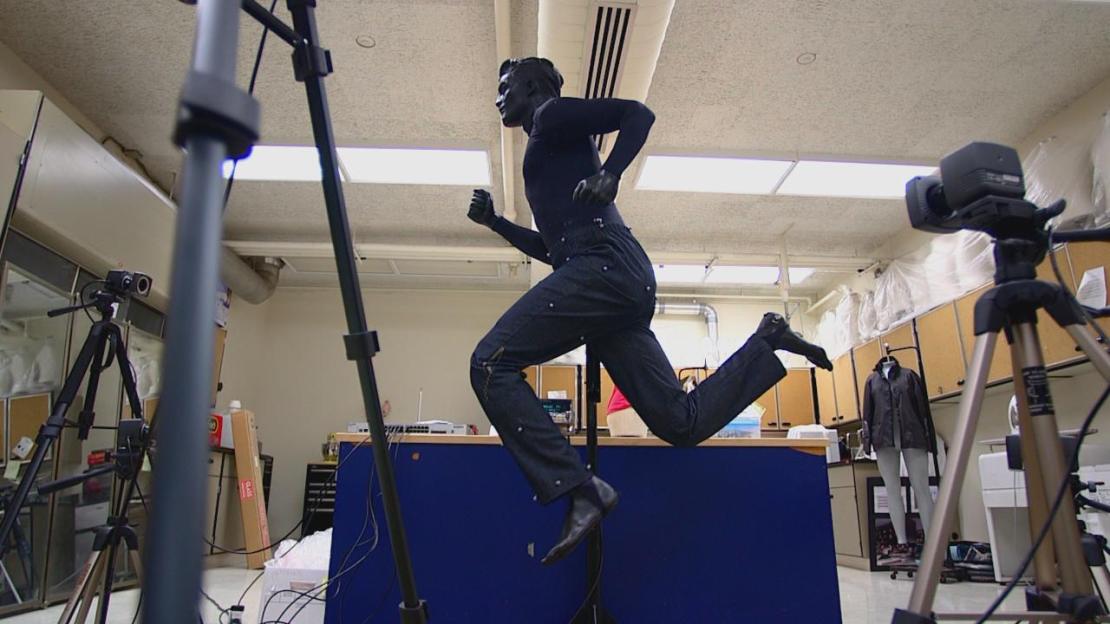Kent McDill, January 22, 2014
After the Golden Gophers take on Wisconsin on the hardwood, tonight?s University of Minnesota LiveBIG premiere details using wind to improve fertilizer and remarkable research being done into making clothes smarter.
It is said that your clothing choices tell a lot about you. Professor Lucy Dunne and several University of Minnesota students are working on clothing that can tell a lot to you.
Associate Professor Lucy Dunne spearheads the work conducted in the Wearable Technology Lab (WTL) at the University of Minnesota. The Lab is under the auspices of the Department of Design, Housing and Apparel, but students working in the WTL come from many different walks of academic life.
The goal of the WTL is to create clothing that does more than just cover your body. ?Smart clothing?? is the term for garments that can provide information or assistance in terms of medical monitoring, atmospheric control, or interfacing with outside electronic devices.
The work done at WTL has captured the minds of technology-minded individuals from around the world. Korea?s IT Times did a feature on Dunne and the WTL a couple of years ago, and Dunne explained then what it is she is trying to accomplish.
"Wearable technology and smart clothing are under-explored areas from the standpoint of apparel design,?? Dunne said. ?There are many compelling applications and a lot of work to be done in understanding the 'human' element of designing wearable systems — that's what we focus on, translating theoretical possibilities into the everyday world."
But we?re not talking about attaching sensors to clothing. What the WTL is doing is trying to create garments with the necessary technology built into it.
?Garment-integrated technology is a little rare,?? Dunne said. ?That?s what we are doing, textile integration, putting the technology into the clothing. We are trying to develop technology that can be worn as something soft.?
Currently, the work includes developing clothing that can be heated up or cooled depending on the needs of the wearer. The sensors can detect levels of heat or cold that could signal elements within the clothing to change the temporal conditions. Dunne calls it ?textile integration.?
The difficulty comes because the sensors need to be close to the body to register heat or cold, and skin-tight clothing does not always suit the wearer. Therefore, Dunne and her students have to fight the battle of comfort over function.
The WTL has had numerous successes to trumpet. Students in the College of Design worked with students from the College of Science and Engineering to come up with solar-powered clothing for the entire family. The key is solar panels integrated into the garment, and the clothing can keep the wearer warm, light up in order to keep the wearer safe, or make an energy transfer from a battery inside the clothing to a port that could power an I-pod.
Besides the garment-integrated sensors, the WTL?s current projects includes Clothing Management and the Smart Wardrobe, a look at electronically managing one?s clothing consumption, and further experimentation into developing responsive technologies for traditional clothing.
For more about their research, visit http://wearable.design.umn.edu/.
Also be sure to check out some of our other blog posts featuring the University of Minnesota this season at LiveBIG: Minnesota.







